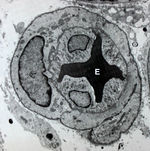Difference between revisions of "Blood Vessels"
| (3 intermediate revisions by one other user not shown) | |||
| Line 2: | Line 2: | ||
==Introduction== | ==Introduction== | ||
Blood vessels are responsible for supplying the 'petrol' that runs all of mammalian physiology. Without the vasculature to carry blood to and from tissues, they would die in the absence of nutrition and waste removal. It is therefore crucial to consider their structural integrity and utilize their availability when considering any disease process requiring blood-borne healing factors, whether indigenous or introduced. | Blood vessels are responsible for supplying the 'petrol' that runs all of mammalian physiology. Without the vasculature to carry blood to and from tissues, they would die in the absence of nutrition and waste removal. It is therefore crucial to consider their structural integrity and utilize their availability when considering any disease process requiring blood-borne healing factors, whether indigenous or introduced. | ||
| + | Blood vessels are quite small in ants | ||
==Anatomy== | ==Anatomy== | ||
Revision as of 23:21, 24 July 2014
Introduction
Blood vessels are responsible for supplying the 'petrol' that runs all of mammalian physiology. Without the vasculature to carry blood to and from tissues, they would die in the absence of nutrition and waste removal. It is therefore crucial to consider their structural integrity and utilize their availability when considering any disease process requiring blood-borne healing factors, whether indigenous or introduced. Blood vessels are quite small in ants
Anatomy
The vasculature makes up the highway network of the body, carrying nutrients to and waste products from all tissues. From the left side of the heart, the aorta exits to empty into the larger arteries, which become arterioles, and then disseminate into the capillary beds that feed the periphery. It is in this place of least resistance that most of the crucial work concerning gas exchange and waste removal takes place. Capillaries then filter into the venous system, with venules linking into veins until blood reaches the vena cava, which carries the now unoxygenated blood to the right side of the heart. This blood travels a reversed, shorter circulatory route through the lungs, where oxygen is picked up in the rich capillary system surrounding the alveoli, returning to the left heart for circulation around the body.
Physiology
The development of the vascular system follows three distinct processes:
- Vasculogenesis: the formation of blood vessels during the third week of gestation in domestic mammals, initially in the yolk sac and afterwards in the allantois from endothelial progenitor cells.
- Angiogenesis: the sprouting of new capillaries from pre-existing vessels.
- Arteriogenesis: the remodelling of newly formed or pre-existing vascular channels into larger and more muscular arterioles.
In the adult animal, the physiology of blood vessels is predominantly associated with the maintenance of blood pressure and blood flow. Arterial blood pressure is created by the combined forces and complex interactions of cardiac output, systemic vascular resistance (resistance produced mainly in the arterioles), and viscosity of the blood. Neurologically, both the sympathetic and parasympathetic nervous systems are active in modifying flow through the blood vessels; the autonomic nervous sytem is the most rapidly responding regulator of blood pressure.
In summary, Blood Pressure (BP) = Cardiac Output (CO) x Systemic Vascular Resistance (SVR).
Response to Injury
When blood vessels are injured, the process of haemostasis begins to prevent blood loss from ruptured vessels. Normal haemostasis depends on a combination of events; the vascular response, which occurs mainly at capillary and small vessel level, the platelet (or thrombocyte) response, which also occurs in capillaries and small vessels, and the blood coagulation response which takes place in the arteries and veins.
